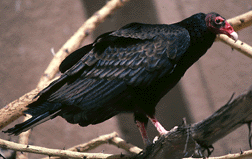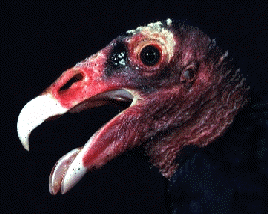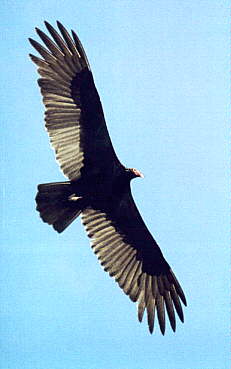


Dry, open country, in the air over deserts.
Description
The Turkey Vulture is one of North America's largest birds of prey. It
reaches a length of 2.2 to 2.7 feet with a wing span of 6 feet. Its
color is brown black with a feather less, red head, white bill and yellow
feet among mature adults. Immature birds have a darker face. Although
usually silent, the bird will occasionally emit a soft hiss or groan.
In flight the turkey vulture looks like it will fall. It's wings are spread
to
the full length (6 feet).
Habits
Vultures are best known for their practice of feeding
on dead animal carcasses (carrions), but will sometimes
attack young and helpless animals if there are no carrion. They
obtain most of their water from the moisture in
carrion, and their strong kidneys let them to
excrete less water when expelling waste.
Turkey vultures, like other carrion birds, are
protected from sicknesses associated with decaying
animals by a very sophisticated immune system.
Their unfeathered "bald" head is easy to keep clean and is characteristic
of vultures and condors throughout the world.
Mating
Mating takes place in all deserts except the Mojave. One to three
eggs are laid in each clutch of eggs in cliff hollows, logs or among rocks
on the ground ; no nest is built. Both parents participate in incubation

 |